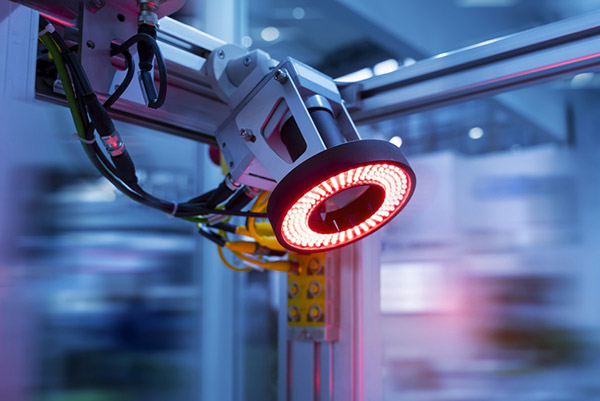Beginner’s guide to understanding optical measurement system
Wiki Article
Checking out the Role of an Optical Fibre Diameter Analyser in Ensuring Item High Quality
The role of an optical fibre diameter analyser is essential in maintaining item top quality within the telecommunications industry. These gadgets procedure fibre diameter with accuracy, making sure consistency and efficiency. Variations in diameter can bring about substantial signal loss, influencing communication reliability. As makers purpose for excellence, recognizing the mechanisms behind these analysers comes to be necessary. What improvements lie ahead in this area, and how will they shape the future of optical fibre production?Recognizing Optical Fibre Diameter Measurement
Measuring the diameter of optical fibres is an essential process in ensuring the performance and integrity of fibre optic systems. Accurate measurement is essential, as variations in diameter can considerably impact signal transmission and total system performance. The measurement procedure typically employs innovative tools and techniques, such as laser micrometers or optical fibre diameter analysers, which give exact, real-time data.These tools can analyze fibres' sizes with severe precision, typically to micrometre degrees. This accuracy assists recognize possible defects or inconsistencies in the manufacturing procedure. Furthermore, understanding the diameter measurement includes identifying the value of factors such as temperature level, tension, and material buildings, which can affect the final dimensions. By preserving strict measurement methods, makers can ensure that the optical fibres meet sector standards and specifications, inevitably adding to the long life and effectiveness of fibre optic networks.The Relevance of Consistency in Optical Fibre Production
Uniformity in optical fibre production is crucial for making certain precision in making procedures. Variations in diameter can substantially impact efficiency metrics, affecting the total high quality and reliability of the fibre. As a result, standardization and quality assurance measures are necessary to preserve harmony and improve product performance.Accuracy in Production Processes

Effect on Performance Metrics
Making sure uniformity in optical fibre diameter significantly influences efficiency metrics across various applications. Consistent diameter causes suitable light transmission, reducing signal loss and improving general performance. When fibres maintain a common size, the likelihood of defects lessens, improving integrity in telecommunications and data transfer (optical measurement system). Additionally, consistent diameters help with simpler combination into existing systems, decreasing compatibility concerns. Variations in diameter can cause fluctuations in depletion and dispersion, adversely affecting performance. By utilizing an optical fibre diameter analyser, suppliers can very closely keep track of and change manufacturing processes, fostering a greater level of harmony. This uniformity not only enhances the quality of the final item yet also enhances customer complete satisfaction, showing vital for maintaining affordable benefit in the optical fibre marketStandardization and Quality Control

How Optical Fibre Diameter Analysers Job
Optical fibre diameter analysers operate through a combination of light transmission and innovative measurement strategies to accurately analyze the diameter of optical fibres. These gadgets make use of a laser or LED source of light that emits a beam directed at the fibre on trial. As light connects with the fibre, it is refracted and scattered, permitting accurate measurements.The analyser catches the light using a high-resolution cam or photodetector, which transforms the optical signals right into electrical signals. Advanced algorithms then refine these signals, calculating the diameter based on the strength and distribution of the light.The system normally includes calibration attributes to guarantee accuracy, utilizing well-known standards to confirm measurements. By continually monitoring the fibre diameter, these analysers help keep conformity with market criteria and specs, ensuring regular item high quality. Boosted automation in modern analysers even more enhances the procedure, facilitating real-time evaluation for makers.Effect On Signal Integrity and Interaction Dependability
A consistent and precise optical fibre diameter is important for maintaining signal stability and communication integrity in fibre optic networks. Variations in diameter can lead to enhanced light loss, leading to abject signal top quality and lowered transmission distances. When fibres are not consistent, issues such as modal dispersion and attenuation may arise, which can distort the data being transferred and cause errors in communication.Furthermore, irregularities in fibre diameter can affect the performance of ports and splicing, leading to additional signal degradation. This inconsistency can compromise the overall integrity of network systems, influencing whatever from web speed to telecommunication quality.Enhancing Production Effectiveness With Advanced Innovation
Keeping consistent fibre diameter is vital for guaranteeing dependable interaction systems. Advanced technology, especially the optical fibre diameter analyser, plays a crucial duty in boosting making performance. By giving real-time dimensions and exact data regarding fibre sizes, this technology allows makers to promptly identify deviations from needed specifications. Production procedures can be adjusted without delay, lowering waste and lessening downtime.The combination of automated systems enhances high quality control, enabling for consistent tracking throughout the manufacturing procedure. This not just speeds up manufacturing however additionally improves total product quality, causing fewer issues. Furthermore, advanced analytics make it possible for makers to maximize their processes based on empirical data, assisting in continual renovation. Consequently, the optical fibre diameter analyser contributes substantially to decreasing operational costs and increasing throughput, inevitably cultivating a much more competitive edge in the marketplace. By welcoming these innovations, makers can guarantee their products satisfy the highest standards of quality and reliability.Future Trends in Optical Fibre Quality Assurance
As the optical fibre industry evolves, future trends in high quality guarantee will plainly fibre testing equipment feature advances in measurement modern technology. These developments will enable more accurate evaluations of fibre diameter, boosting general item integrity. Additionally, the combination of automatic top quality control systems assures to enhance procedures and improve consistency in production.Advances in Measurement Modern Technology
With the consistent evolution of optical fibre modern technology, the demand for exact measurement devices is more critical than ever. Current advances in measurement modern technology have actually led to the development of advanced optical fibre diameter analysers that utilize high-resolution imaging and laser-based strategies. These advancements allow makers to accomplish greater precision and repeatability in diameter dimensions, important for preserving strict high quality standards. Additionally, the integration of artificial knowledge and machine knowing algorithms improves data analysis, allowing for real-time adjustments during production procedures. As the industry embraces these technological advancements, they assure to enhance efficiency, minimize waste, and assure the dependability of optical fibres in different applications, eventually sustaining the growing need for high-performance interactions framework.
Automated High Quality Control Solution
While the optical fibre market proceeds to development, the implementation of automated top quality control systems is poised to change top quality guarantee processes. These systems use innovative formulas and real-time data evaluation to check fibre diameter and other vital parameters with unrivaled precision. By integrating optical fibre diameter analysers with automated systems, producers can discover discrepancies from requirements quickly, decreasing the threat of defects. Additionally, automation minimizes human error, improves uniformity, and increases production timelines. As sectors increasingly take on Sector 4.0 concepts, the role of automated quality assurance systems will increase, facilitating a smooth link in between production and quality control. This change not only guarantees higher product quality however additionally cultivates development and effectiveness throughout the production process.Frequently Asked Questions
What Aspects Affect the Optical Fibre Diameter Dimension Accuracy?
Aspects influencing optical fibre diameter measurement accuracy include environmental problems, calibration of measurement tools, driver method, the level of sensitivity of the measuring device, and the physical buildings of the fibre itself, such as material structure and surface area irregularities. (fibre testing equipment)Just How Usually Should Optical Fibre Diameter Analysers Be Calibrated?
Calibration regularity for optical fibre diameter analysers normally depends upon use strength and manufacturer referrals. Normal checks, frequently month-to-month or quarterly, guarantee measurement precision and reliability, thereby preserving the honesty of the manufacturing process.Can Environmental Conditions Influence Dimension Outcomes?
Environmental problems can substantially influence measurement end results. Aspects such as temperature level, moisture, and atmospheric pressure might affect the efficiency of measurement instruments, potentially resulting in inaccuracies in the results gotten from optical fibre diameter evaluation.What Are the Typical Kinds Of Optical Fibre Diameter Analysers?

How Do I Choose the Right Analyser for My Production Needs?
Choosing the appropriate analyser involves reviewing manufacturing needs, including fibre type, diameter array, and measurement precision. Furthermore, examining the analyser's calibration, compatibility with existing devices, and customer interface can significantly affect the decision-making procedure.Report this wiki page